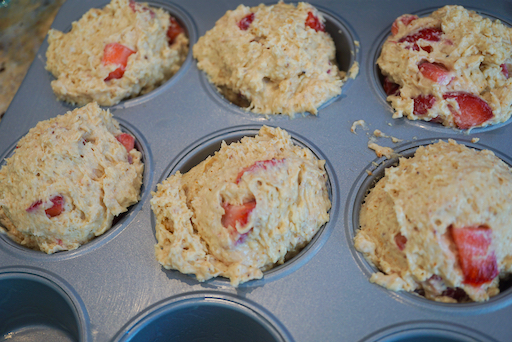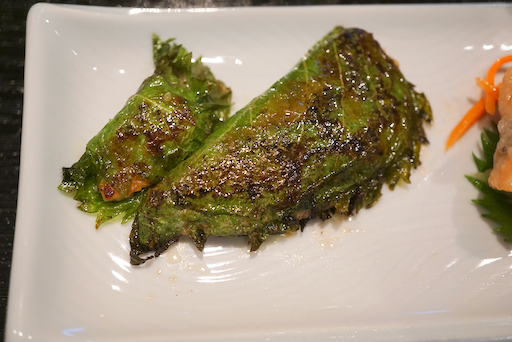Because of Covid-19, we are having groceries delivered. This creates some problems because we can't inspect the items before we receive them as we would if we were picking them out at the store. In addition, because of substitutions, what we actually receive can sometimes be unexpected such as getting cilantro as a substitution for celery, which occurred in a recent delivery. One such case occurred this week. We ordered a small seedless baby watermelon but instead we got two quarters (actually 1/2) of a full sized melon. This was much much more watermelon than we were expecting. So, besides eating the watermelon as is, my wife made watermelon soup スイカの冷製スープ, pickled watermelon rind, スイカの皮のピクルス and watermelon ribbon salad スイカのリボンサラダ. Although the recipe for the watermelon ribbon salad shown here is basically the same as the one we posted before, my wife changed the amounts to make a smaller portion (using a 5x7 inch casserole dish instead of the usual 6x10) and wanted to record the recipe. The white layer is made of cottage cheese with a good amount of wasabi added which really makes the dish giving it a nice "zing". We served it as a first appetizer of the evening on a crane plate we got in Kyoto sometime ago.
These are the layers of the ribbon salad. Looks like nice pink and white ribbon.
Ingredients:
1/2 cup buttermilk
1/8 cup milk or cream
3/4 + 1/8 cup cottage cheese mashed
1/8 cup mayonnaise
1/8 tsp salt
1 lime or lemon squeezed
2 tsp. wasabi (or to taste)
Directions:
Puree the watermelon. Add the buttermilk and lime. Take 1/4 cup of the puree and use it to bloom the gelatin. Heat the bloomed gelatin in the microwave for 30 seconds. Add the gelatin to the rest of the puree. Pour 3/4 cup of the puree mixture into the bottom of the 5x7casserole dish and let it jell in the refrigerator until solid. (Keep the remaining puree at room temperature and it will stay liquid.)
Mash the cottage cheese using an immersion blender. Add the mayo and salt. Take some of the cottage cheese mixture, add it to a small bowl and use it to soften the wasabi. The amount of wasabi is basically to taste. I found that the cottage cheese tends to calm it down so I end up putting in a fairly large amount. Once it has been homogenized into the amount in the small bowl add it to the large bowl and stir until it is incorporated. Bloom the gelatin in the lime juice. Heat in the microwave for 30 seconds until melted. Add to the bowl of cottage cheese. Pour the cottage cheese over the watermelon layer and cool until solid. Add the remaining 3/4 cup watermelon puree on top of the cottage cheese layer and cool until solidified.
This is a very summery refreshing salad. The wasabi in the white cottage cheese layer really works well. The sharpness of the wasabi flavor somehow complements and accentuates the sweetness of the pink melon layer. Without the wasabi this dish would be pretty bland. We had this with chilled pink wine (always good to color coordinate whenever possible), Aix Rose 2019, Rosé from Coteaux d'Aix-en-Provence, Provence, South of France. It went perfectly.





















